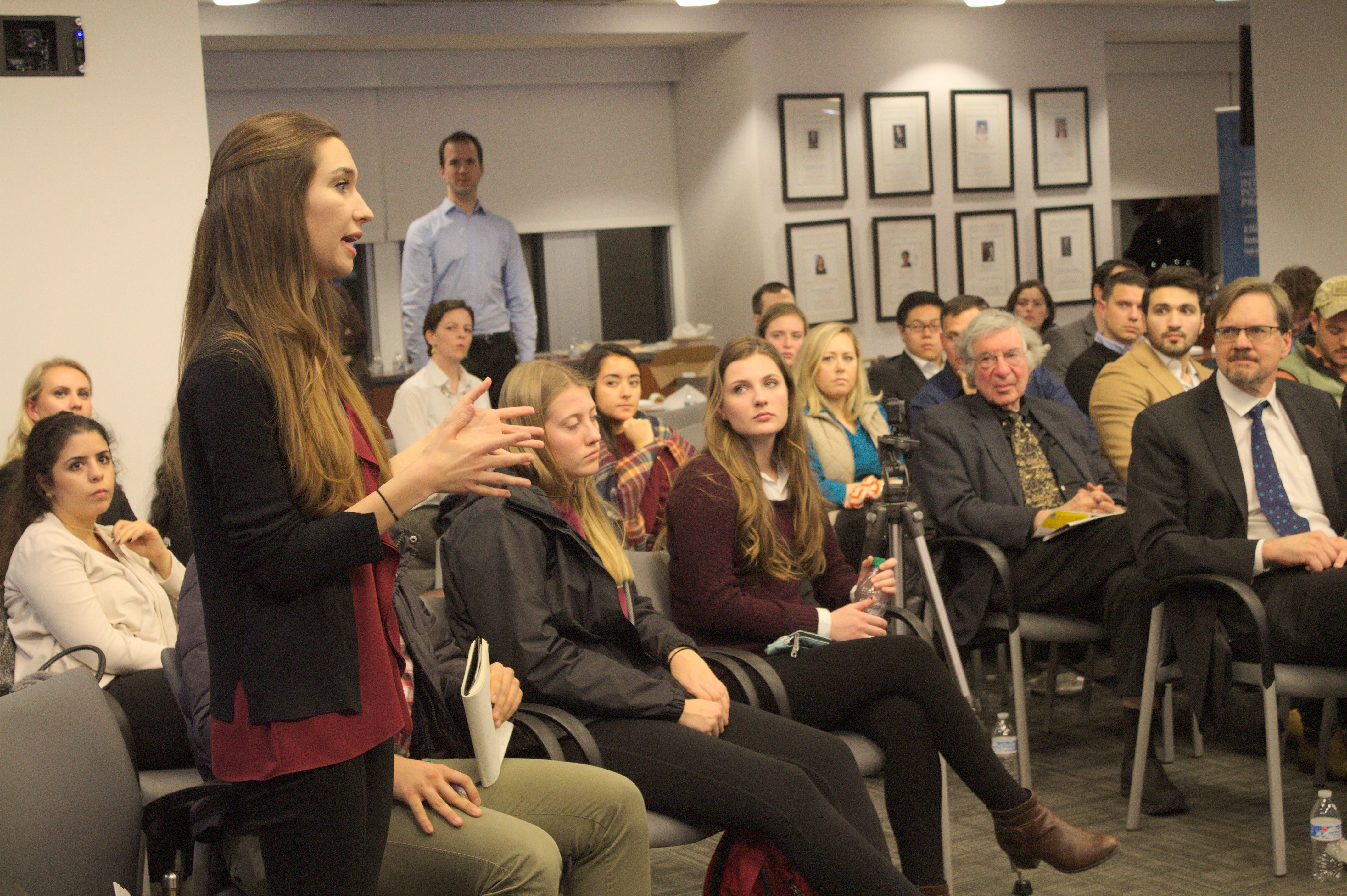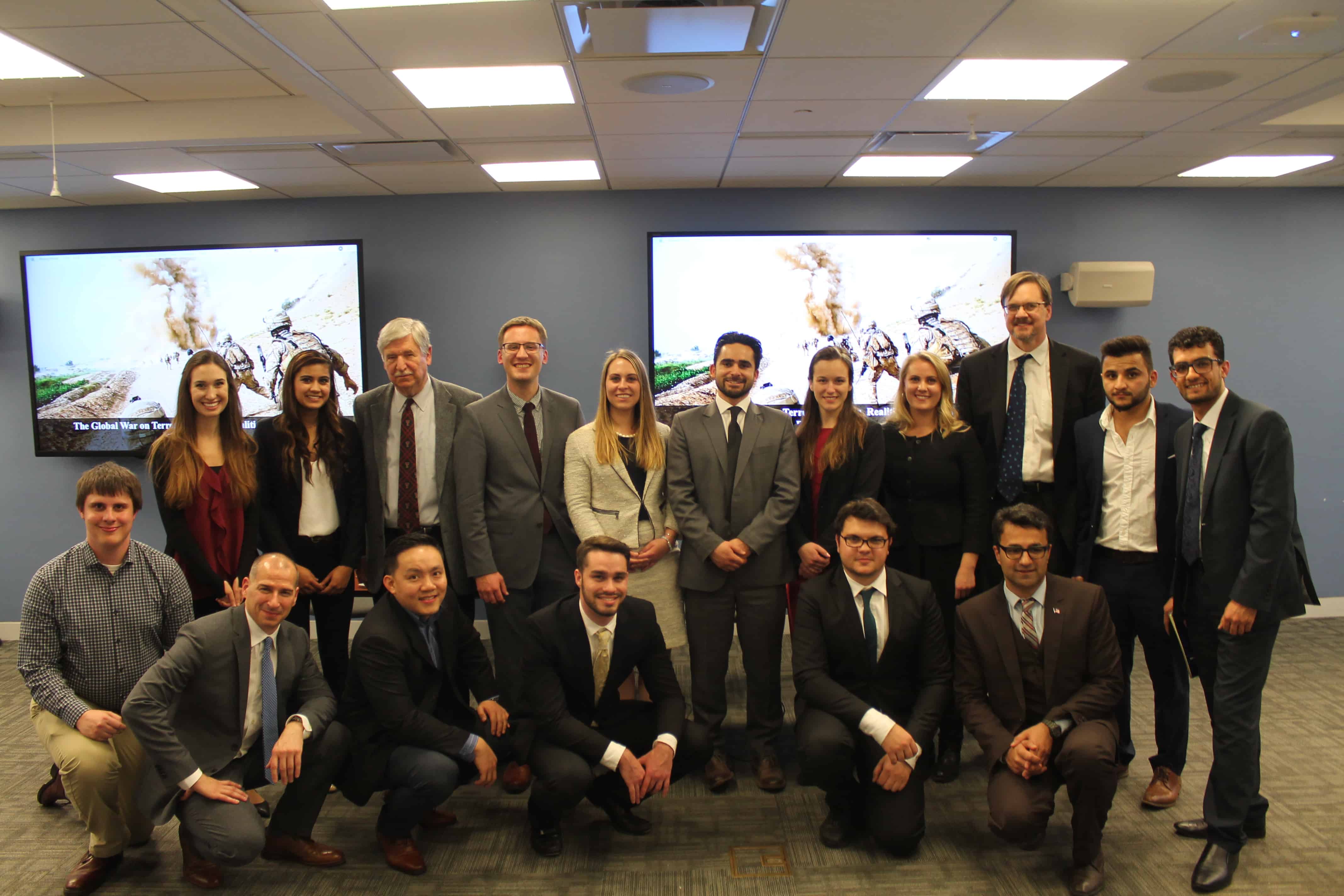
GWOT Panel: Reflections from Team Member Lindsay Stanek
On Wednesday, December 6, I had the honor of attending The Global War on Terrorism: Myths, Realities & Solutions seminar at The George Washington University’s Elliott School of International Affairs. The seminar was hosted by Rise to Peace, a non-profit organization that works to promote peace and counter extremist ideology around the globe. The panel was composed of the former chairman of the U.S. National Intelligence Council, Dr. Christopher Kojm, the founder of Rise to Peace, Ahmad Shah Mohibi as well as Dr. Gawdat Bahgat of the National Defense University and Ambassador John W. Limbert.

Lindsay Stanek is a M.A. candidate at The George Washington University’s Elliott School of International Affairs
Early on in the discussion, Dr. Gawdat Bahgat contended that the roots of terrorism stem from perceived injustice. He argued, “When people feel that they have been unfairly treated, they often try to do something about it. Social media makes it much easier for individuals to communicate perceived injustice.”
Panelists discussed a wide range of topics from the roots of Al-Qaeda to the concentration of power under President Abdel Fattah el-Sisi of Egypt, to the growing need for greater government transparency. Mr. Mohibi spoke of the corruption in the Afghan government and the rise of ISIS in the North of Afghanistan.Mr. Mohibi explained that there are presently twenty-six insurgency groups operating in the region and the unstable environment enables these terrorist groups to both target and exploit vulnerable children and defenseless families.
The discussion then moved to Dr. Kojm sharing his insight on what prompted the rise and proliferation of ISIS. Dr. Kojm explained how the U.S. intervention in Iraq put the Shia majority in power after countless Shia’s had been repressed under Saddam Hussein. Dr. Kojm shared, “The Sunni community felt marginalized and felt its existence was in question… the government in Iraq which was deeply distrustful of the Sunni community, they undid much of the political work of the surge…” Dr. Kojm then went on to speak of the corruption in the Iraqi government and lack of popular support for the government in the Sunni community. He claimed that an open door for ISIS was created not only from the political and social destabilization of Iraq, but also from perceived injustice and existential danger in the Sunni community.
Ambassador John W. Limbert then spoke of the Iranian threat and argued that it has been vastly overblown. He asserted that the Islamic Republic is a threat to its own people but much less of a threat to the United States. Ambassador Limbert suggested that what many countries in the Middle East lack is a working model of governance. He argued, “Almost all of them are multi-ethnic, multi-religious places…even the Emirates, even Kuwait…They need something that manages diversity…if not, you have grievances.”
Throughout the panel, I noticed how the speakers continuously discussed weak states and perceived injustices. I believe it is vital to continue to engage in discussions and educational panels that seek to sort through the complexities of various regions and identify the grievances that enable terrorists to capitalize on marginalized communities. In “Depictions of Children and Youth in the Islamic State’s Martyrdom Propaganda”, Mia Bloom, John Horgan and Charlie Winter write, “From January 1, 2015, to January 31, 2016, eighty-nine children and youth were eulogized in Islamic State propaganda. Fifty-one percent were alleged to have died in Iraq, while 36 percent died in Syria.”[1]
These numbers are staggering and reveal the disturbing fact that extremist organizations are recruiting children, the world’s most vulnerable, at ever-increasing rates. Children are not only being trained militarily but also ideologically, with violence being one of the primary tools of indoctrination.
ISIS has been known to visit orphanages and refugee camps to recruit[2] as well as impoverished villages and neighborhoods. “The poorer neighborhoods of Ankara, Turkey, are reportedly a source of child recruits. One such neighborhood, Hacibayram, has become a recruitment hub for ISIS.”[3] If we truly seek to counter the false narrative propagated by terrorists, it is vital to begin examining the grievances that aid in recruitment. Moreover, we must realize that education is vital in the fight against extremism. In the words of Malala Yousafzei, “Let us pick up our books and our pens…They are our most powerful weapons. One child, one teacher, one book and one pen can change the world.”

Lindsay Stanek, first from the left with the Team of Rise to Peace
—————————————————
[1] Mia Bloom, John Horgan, Charlie Winter, “Depictions of Children and Youth in the Islamic State’s Martyrdom Propaganda,” CTC Sentinel 9, no. 2 (2016).
[2]Ibid., 652.
[3] J.M. Berger and Jessica Stern, ISIS: The State of Terror (New York: HarperCollins Publishers, 2015), 212.
